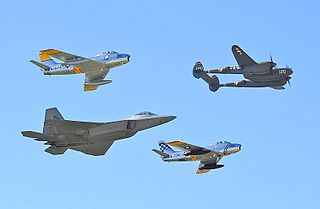
The Karelia Aviation Museum [1] (Finnish : Karjalan Ilmailumuseo) is located at Lappeenranta Airport in Lappeenranta, Finland. The museum is run by Kaakkois-Suomen ilmailumuseoyhdistys ry. The museum has also been known as the Aviation Museum of South-Eastern Finland (Finnish : Kaakkois-Suomen ilmailumuseo).

Finnish is a Finnic language spoken by the majority of the population in Finland and by ethnic Finns outside Finland. Finnish is one of the two official languages of Finland ; Finnish is also an official minority language in Sweden. In Sweden, both Standard Finnish and Meänkieli, a Finnish dialect, are spoken. The Kven language, a dialect of Finnish, is spoken in Northern Norway by a minority group of Finnish descent.

Lappeenranta Airport is an international airport in Lappeenranta, Finland. Opened in 1918, Lappeenranta Airport is Finland's oldest still operating airport. In 2011, approximately 116,000 passengers used the airport. The Karelia Aviation Museum is located at the airport. In 2016 the ownership of the airport changed from the state-owned Finavia to new private company Lappeenrannan Lentoasema Oy.

Finland, officially the Republic of Finland, is a country in Northern Europe bordering the Baltic Sea, Gulf of Bothnia, and Gulf of Finland, between Norway to the north, Sweden to the northwest, and Russia to the east. Finland is a Nordic country and is situated in the geographical region of Fennoscandia. The capital and largest city is Helsinki. Other major cities are Espoo, Vantaa, Tampere, Oulu and Turku.
The museum is housed in two covered halls and displays fighter aircraft and smaller objects from the Second World War and onwards.

A fighter aircraft is a military aircraft designed primarily for air-to-air combat against other aircraft, as opposed to bombers and attack aircraft, whose main mission is to attack ground targets. The hallmarks of a fighter are its speed, maneuverability, and small size relative to other combat aircraft.
Aircraft on display include:
- MiG-21BIS (MG-127),
- Saab 35 Draken (DK-213),
- Saab 91 Safir (OH-SFB), as well as
- Jorma Kettunen's Nieuport 17 replica (OH-U323).

The Saab 35 Draken is a Swedish fighter aircraft developed and manufactured by Saab between 1955 and 1974. It was the first fully supersonic aircraft to be deployed in Western Europe.

The Saab 91 Safir is a three or four seater, single engine trainer aircraft. The Safir was built by Saab AB in Linköping, Sweden, and by De Schelde in Dordrecht, Netherlands.

The Nieuport 17 C.1 was a French sesquiplane fighter designed and manufactured by the Nieuport company during World War I. An improved development of the Nieuport 11/16, it was a little larger than its predecessors, and better adapted to the more powerful engine of the N.16. It also incorporated innovations such as the newly-developed Alkan-Hamy synchronization gear, permitting the use of a fuselage-mounted synchronised Vickers gun firing directly through the propeller arc.
In 2005 the museum also had a Hawker Hurricane (HC-452) on loan from the Aviation Museum of Central Finland.

The Hawker Hurricane is a British single-seat fighter aircraft of the 1930s–40s that was designed and predominantly built by Hawker Aircraft Ltd. for service with the Royal Air Force (RAF). It was overshadowed in the public consciousness by the Supermarine Spitfire's role during Battle of Britain in 1940, but the Hurricane actually inflicted 60 percent of the losses sustained by the Luftwaffe in the engagement, and it went on to fight in all the major theatres of the Second World War.
Among the smaller objects on display is a radial engine from a Fokker C.X that sank in Lake Saimaa, engine and different parts from a Tupolev SB that went down in Ylämaa.

The Fokker C.X was a Dutch biplane scout and light bomber designed in 1933. It had a crew of two.

The Tupolev ANT-40, also known by its service name Tupolev SB and development co-name TsAGI-40, was a high speed twin-engined three-seat monoplane bomber, first flown in 1934. The Tupolev design was advanced but lacked refinement, much to the dismay of crews, maintenance personnel and of Stalin, who pointed out that "there are no trivialities in aviation".

Ylämaa is a former municipality of Finland. It was consolidated with Lappeenranta on January 1, 2010.
The museum is closed during winters.














